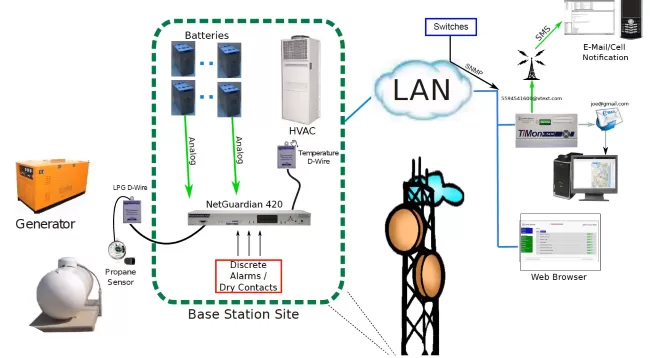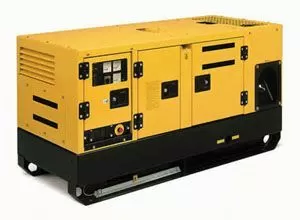Check out our White Paper Series!
A complete library of helpful advice and survival guides for every aspect of system monitoring and control.
1-800-693-0351
Have a specific question? Ask our team of expert engineers and get a specific answer!
Sign up for the next DPS Factory Training!

Whether you're new to our equipment or you've used it for years, DPS factory training is the best way to get more from your monitoring.
Reserve Your Seat TodayLet's take a look at some typical generator monitoring bid specs and results to understand what generators cost and what technical requirements apply.

DPS has generator monitoring devices from $800 to $6000 (USD), with a wide range of I/O capacities. For detailed pricing information about this or a similar generator monitoring system, call DPS at 1-800-693-0351.
This document is another straightforward summary of what 3 different bidding contractors have offered for the project's two subcomponents:
That first line-item has several things knotted up in one line, but looking at the bid results is still useful as we learn about how much generators typically cost. The 3 bid amounts on the bid sheet are:
There is a lot of possible variance here (high bid is 147% of low bid), up to and including which generator brand and model has been proposed by each bidder. Still, this is a reasonably tight group that gives you some idea what similar projects might cost.
The bids for the ongoing generator monitoring after the first year are much more diverse:
This wide range of offers is a great example of why you really need to think about generator monitoring. For a large organization, $3850 is not a huge sum to budget for, but everything adds up. The trend recently has been toward cloud-based monitoring, and manufacturers often leverage their inside track to push you toward their own offering.
I assume here that "No Bid" is a reflection of the contractor's decision not to become involved in selling multi-year service contracts.
"n/a", by contrast, seems to show that there is no fee at all for monitoring the generator offered in that bid. That's certainly the model that a contractor would offer if bundling in an on-premises monitoring device like a DPS RTU.
In that case, the purchase price might inflate by a few thousand dollars (depending on the generator and what else should be monitored at the site). This would pay for itself within a year (assuming $3850/year for comparison purposes) by elimination of cloud-based monitoring service fees.
Only you can decide how you want to pay for generator monitoring. Just know that there are both one-time and recurring models with varying levels of service. You can have an on-premises solution that you handle yourself, a cloud-based solution that you manage on your own, or a cloud-based solution that includes 7x24 monitoring service.
Your organizational size and need for security will often be the deciding factor as you make this choice for your organization. Research your options carefully, as the differences between on-premises and cloud-based solutions can be quite stark.
Although I obviously recommend one, a DPS NetGuardian is just one option available to you in this scenario. You must evaluate how to spend your budget dollars.

This project spec is to replace two existing 20 KW LP gas standby generators. The generators are located in unmanned, unheated block wall buildings.
As with any spec for generator monitoring, there's a lot to chew on here:
All components must be UL listed and approved.
This is a common requirement for just about any project involving industrial electronic equipment. The purpose is to ensure safety, reliability, and non-interference with other devices (EMI interference).
At DPS, we always use our in-house lab tests prior to any UL certification. Repeated power cycling, a hot/cold chamber, and an anechoic chamber allow us to essentially guarantee UL certification prior to sending our device out for an official lab test.
Proper grounding, in accordance with applicable code is required.
This one is a point of pride for me when it comes to DPS equipment. If you turn over a NetGuardian RTU, you'll see a rather incredible number of screw holes that hold the circuit board into the aluminum chassis.
Mechanically, we probably only need perhaps 5 of these. On most 19" rack-mount RTUs that we manufacture, you'll find something like 25 screw holes. These provide incredibly helpful grounding paths and many points around the circuit board. In particular, we intentionally place screw holes as grounding points near particularly noisy components on the board. This electrically connects these areas of the ground plane to the chassis ground (both a screw lug and rack ears connect to your buildings grounding system), dramatically reducing our EMI output and susceptibility to external interference.
Of course, there are some cases where your site may not be set up for this type of grounding. During some install services for DPS RTUs, I've encountered a difference in electric potential between the rack and the power input for an external device like a current transducer. When this happens, we get an artificially high reading from the sensor (ex. 38 mA from a sensor that should only output 4-20mA). This makes it impossible to get an accurate reading from the sensor and can actually cause overheated or damaged equipment (DPS gear is quite rugged and has always survived in my experience, but all gear has its limits).
Must connect and be compatible with existing ATS ASCO 300 Transfer switch ... The awarded bidder will remove the existing generator and install the generator in the existing enclosure with a jamb-to-jamb width of 34-1/2".
This is a common type of requirement for any generator replacement. Most sites that need a generator already have one. It may have reached its end of life, and now it must be replaced.
When you're planning your bid response, you need to account for the technical and physical limitations that are inherent to the particular project.
In this case, the generator must fit into a 34.5" wide space. You'll want to confirm that your generator model has adequate cooling options at that size and power level, whether or not it needs an adapter plate for the existing exhaust pipe (if so, do you provide one?), etc.
Most project bids demand that you include all necessary hardware, parts, labor and training required to install the generator and make it operational.
It's a best practice to choose equipment with good installation manuals/wiring diagrams with any RTU or similar monitoring system (DPS does so for all our products), so be sure to include these.
If you need to provide additional items, such as fuel piping or fittings, make sure that your bid response is clear about what those items are and how they will be installed.
For generator installation and monitoring bids, it's always important to consider all the items that will be needed for a successful project. Make sure to take into account the physical size, power requirements, and other technical specifications of each generator when bidding on a job.
Finally, include the necessary paperwork and training materials to ensure that your customers can safely use their new generator system. With these considerations in mind, you'll be able to craft an effective bid and win the business for your company.
Our background at DPS is in remote monitoring, and that often means monitoring of backup power systems like generators and batteries. We're always here to help you with general guidance and, when you need it, a price quote for an RTU that suits your project.
Call us at 1-800-693-0351 or email us at sales@dpstele.com

Andrew Erickson
Andrew Erickson is an Application Engineer at DPS Telecom, a manufacturer of semi-custom remote alarm monitoring systems based in Fresno, California. Andrew brings more than 19 years of experience building site monitoring solutions, developing intuitive user interfaces and documentation, and opt...